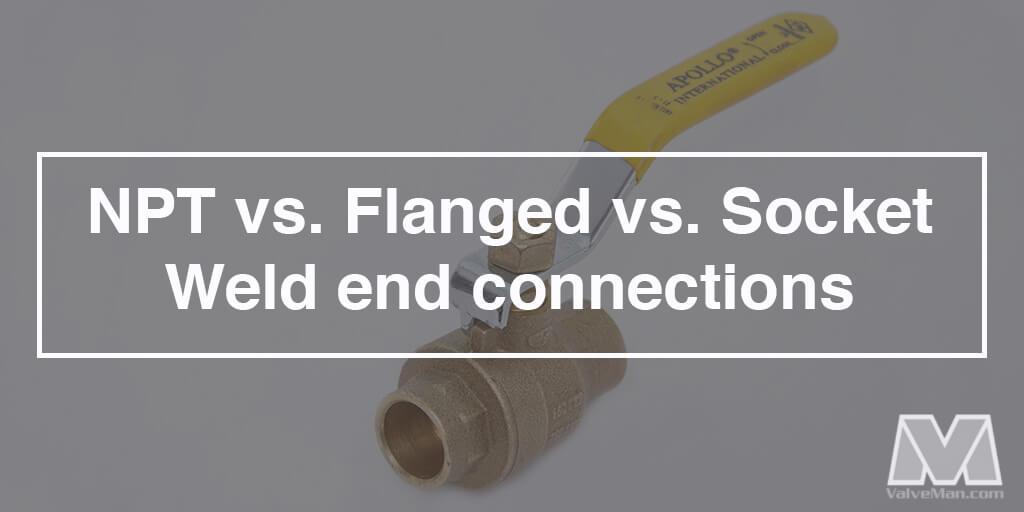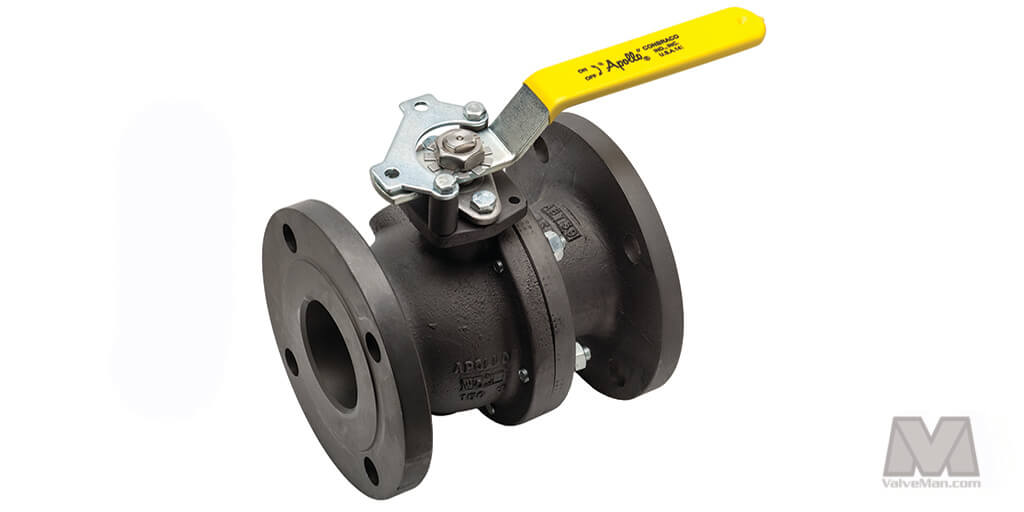Choosing the Perfect Valve End Connection Type: NPT vs Flanged vs Socket Weld
Posted by Gilbert Welsford on Sep 6th 2016

The great thing about valves is that their options are almost infinite. That's a good thing when connections are concerned, as different applications often require specific connections. The top three choices are:
- NPT
- Flanged
- Socket Weld
Deciding which one is perfect for your application may depend on cost and the basic pros and cons that each connection type presents.
3 Common Types of Connections
Whether you choose NPT (Threaded), Flanged, or Socket Weld, each has its advantages and disadvantages, making each more practical or impractical for particular applications.
- NPT: This is a threaded connection. In fact, the acronym, NPT, stands for National Pipe Thread Taper. This is a United States standard for all piping and valve threads. Unlike the threading found on a typical bolt, which is straight, tapered threads will actually pull the valve tighter to the pipe during installation. This creates an extremely fluid-tight seal, and is exactly why many plumbing applications utilize this type of connection. The rate of thread taper--in accordance with the ANSI and ASME standard--is 1" of diameter to every 16" of length.
- Flanged: A valve with flanged connections is very handy. Some indications would make flanged connections superior to NPT for seal quality, but this is a variable that is dependent on applications and media. Flanges work by bolting together to form a seal between the valve ports and the pipe ends. This connection type accommodates 2 and 3 piece valves, which may be removed from a pipeline without disturbing other connections. The disadvantage of flanged connections is that they are sometimes subject to thermal distortion and shock.
- Socket Weld: Typically used for small pipe diameters (NPS 2 or smaller), a socket weld is basically a recess in either end of a valve into which a pipe end fits. As the name suggests, this type of connection is welded in place, and is for applications where the risk of leakage must be minimized. This type of connection can be used in place of NPT connections, and is very cost efficient. The down side of socket weld connections is that the joining is permanent, making disassembly a lot of work, and that expansion gaps created by a weld can lead to premature corrosion.

And there you have it, the basic differences, as well as some general pros and cons, between NPT, Flanged, and Socket Weld connections. Choosing the one that is perfect for you will ultimately depend on your application requirements, but each of these connection types are tried and true, and have proven themselves worthy over many years in numerous industries.
